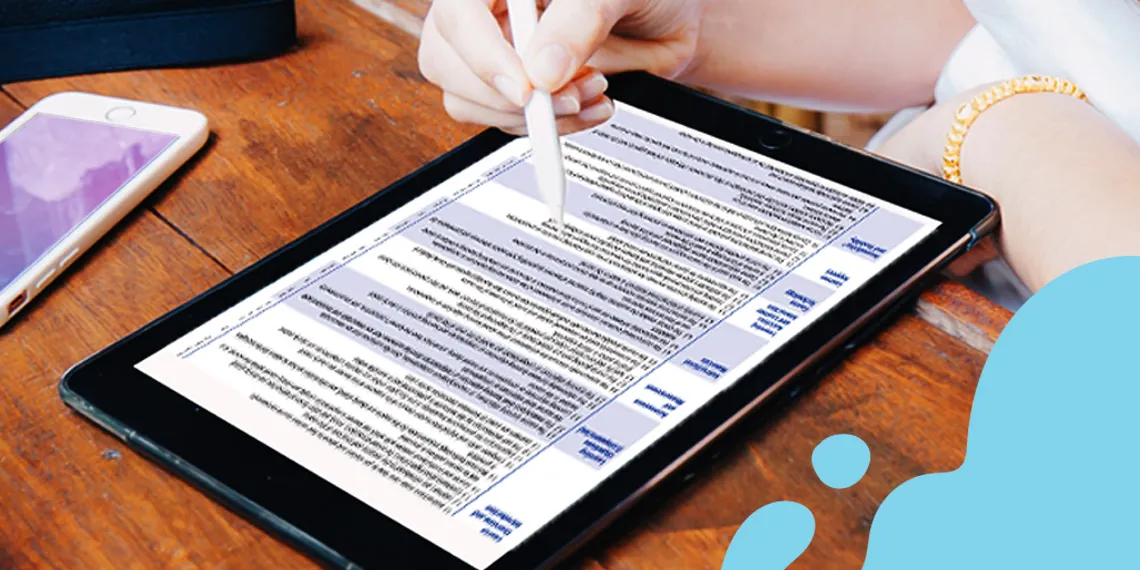The What, How, and Why of the Quality Matters Rubric
The key metric of quality course design across all online/hybrid courses at UArizona is the Quality Matters (QM) Rubric.

The key metric of quality course design across all online/hybrid courses at UArizona is the Quality Matters (QM) Rubric. At UCATT, our instructional designers use the QM Rubric to guide the design of our online/hybrid courses. It is also used in our Quality Matters Internal Peer Reviews, providing the means to assess the quality of the course across a variety of different standards essential for student success.
What is the Quality Matters Rubric?
The QM Rubric consists of eight General Standards and is focused on course design (rather than content or content delivery). These eight Standards are:
- Course Overview and Introduction
- Learning Objectives (Competencies)
- Assessment and Measurement
- Instructional Materials
- Learning Activities and Learner Interaction
- Course Technology
- Learner Support
- Accessibility and Usability
Each General Standard is made up of Specific Review Standards. The QM Rubric also includes detailed and extensive annotations that explain the application of the Specific Review Standards, make connections between them, and provide examples. The Rubric is more than just an evaluative tool and equally emphasizes the continuous improvement of the course. The annotations offer assessment criteria and ways to highlight improvement areas and examples of how each standard can be met. For example, you can access an abbreviated version of the QM Rubric (without annotations) at Quality Matters at UArizona.
How was the Quality Matters Rubric created?
In 2003, a group of educators in the MarylandOnline, Inc. (MOL) consortium came together with a common problem among institutions: how do we measure and guarantee the quality of a course? Solving this problem had become increasingly necessary as institutions began developing systems of online course sharing with other institutions. Such systems highlighted the urgent need for a way to ensure that course quality would be equivalent for students regardless of where the course originated. Armed with a FIPSE grant, they were able to develop a Rubric, of course, design standards, and a replicable peer review process around this Rubric.
Those behind the Rubric recognized that to measure and guarantee the quality of courses, they first needed to agree on the expectations for quality. They needed a set of standards that were trustworthy, student-focused, and based on both research and best practices. The result is the list of General Standards and Specific Review Standards described above.
With the need for a set of standards established, the next step was to determine what those standards would be. This process was solidly grounded in extensive literature reviews of online learning research. Not only was analysis the foundation of the Rubric, but it has continued to be a driving force in the ongoing evolution of the Rubric. As a result, QM has regularly updated the Rubric to reflect the most current research. Today, an entire Department of Innovation & Research is dedicated to curating and supporting research on the QM Model and reviewing literature regarding various factors that improve student learning and retention rates, activities that increase learning and engagement, and inclusivity practices.
When developing the Rubric, research was only one piece of the puzzle. The initial developers knew it was equally important to incorporate best practices from those on the front lines of education. The initial Standards also depended on the insights of experienced online instructors and instructional designers. The Rubric Committee responsible for revising the Rubric comprises faculty and instructional staff with extensive experience using the QM Rubric.
Currently, QM is an internationally-recognized, independent, nonprofit program that provides quality assurance for online/hybrid courses worldwide. We use it here at the University of Arizona to evaluate and assist courses to be their best for our students. To learn more about the history of Quality Matters, please visit “What is Quality Matters?”
Why do we use the Quality Matters Rubric at UArizona?
To answer this more fully, I would like to point out that the Quality Matters Rubric is not a Rubric in isolation. Instead, it is connected to a complete peer review process designed by experts and refined over the years. Extensive resources and workshops support instructors and course designers in interpreting and implementing the Rubric for various contexts.
The Quality Matters Rubric and peer review process promote realistic and achievable goals for instructors and course designers. One of QM’s foundational principles is “Continuous Improvement,” Thus, the Rubric needs to be met at an 85% success rate for a course to be considered Quality Matters certified. This is important, as the perpetual quest for “perfection” in courses is unrealistic and can even be detrimental to the course development process.
Additionally, the QM Rubric leaves room for instructor autonomy and agency. Rather than forcing instructors to teach specific content or even teach content a certain way, the QM Rubric provides instructors with a foundation to guide their teaching in a way that is engaging and accessible to students. For example, if the Quality Matters Rubric is the house, the instructor is the interior designer.
At UArizona, we have a dedicated team of instructional designers that help instructors build and revise courses based on the Quality Matters standards. This is especially important in a large and diverse university, as students expect consistent quality across their courses.
The QM Rubric is the only measure to harmonize design practices in online courses across the entire university. Consistency rooted in good pedagogy is vital for students to take multiple classes and maximize their success. The QM Rubric aims to show students transparently how all the course work and lessons are connected to help them achieve the student learning outcomes.


